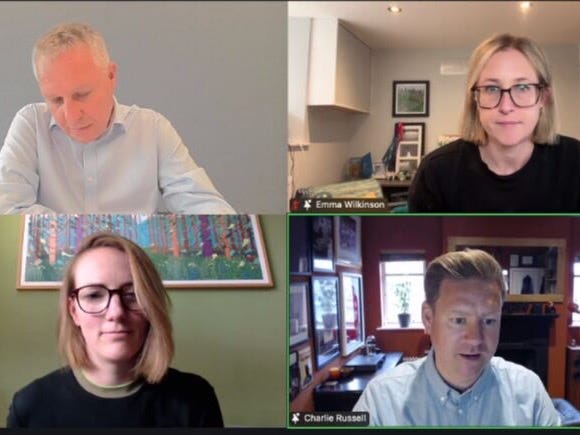“I’m in ‘Kill Mode’ at the moment,” one of my editors told me recently. “I literally cannot do everything that’s being asked of me, so every time a new story idea is suggested, I have to find a way to kill it.”
The volume of breaking news, pitches and “suggestions” from the editor-in-chief they have to deal with on a daily basis is far more than one person can ever get through. And that means they have no choice but to find reasons to say “no” to as many ideas as possible.
I find the concept of Kill Mode really helpful to bear in mind when I’m pitching.
So often, we talk about what’s going to make an editor say “yes” to our story. But in today’s ultra-competitive media climate, what we should really be focusing on is finding reasons they cannot say “no”.

So what kind of things elevate your pitch from “one a journalist might say yes to” to “one a journalist cannot say no to”?
Here are a few ideas, based on my own experience of both receiving PR pitches as a journalist, and pitching to editors as a freelancer:
Create Urgency
I have a confession to make: I have a terrible habit of expressing an interest in PR pitches and then not actually getting round to writing them…
This isn’t deliberate but it is unfortunately inevitable in a fast-moving industry where the most pressing deadlines always get prioritised. I know I am far from the only journalist to find my day taken up with breaking news, last-minute stories on short deadlines and answering urgent queries from editors, which means the non-urgent stuff always gets pushed to the back of my to-do list.
One way to avoid your story ending up at the bottom of a journalist’s priority list is to make it more urgent. It works on me when I’m pitched stories by PRs and brands - and it’s a technique I use when pitching to editors too.
You could:
Put a time limit on an exclusive. Offer an exclusive but only up until a certain embargo date, after which the story reverts to you to send out to competitor publications. There’s nothing like a pressing deadline to encourage journalists and our editors to actually get round to doing the story.
Pitch a topic that’s relevant NOW. News publications are really keen on trend-based stories, but appetite for these moves on quickly. If you spot a relevant hook for your story, seize the moment and pitch it immediately - even waiting until the next day may be too late. You want to catch an editor in the moment they’re looking to commission a story on that subject.
Encourage healthy competition. Make clear that the same story is going out widely to their competitors at the same time. Sometimes publications are motivated to run a story mainly because they fear everyone else will be doing the same thing and they’ll be missing out. (This can be a risky strategy though - see the note below).
Note: There are pros and cons to all of these techniques - that’s a whole other newsletter - but I’ve covered some of the scenarios where you should offer an exclusive vs where you should foster competition between publications in this guide: Should I pitch to one journalist at a time?
Find a Juicy Story
I receive roughly 30 decent story pitches every week but, as an independent journalist, I can only ever pick up a fraction of those - I work on roughly 2 to 6 stories per week, depending on how involved they are.
That means every week I’m having to say “no” to at least 80 per cent of the decent stories I’m pitched - and that’s not even touching on all the unsuitable press releases I receive.
The only real difference between the decent stories I have to say no to and the good stories I do take on, is how strong they are. Competition is tough so the best pitches really are the ones with the best stories.
Things that make a story stand out for me are:
An emotive top line - Publications want stories that trigger a reaction, which is so important in today’s world where engagement is everything. If I read a statistic or a human story and immediately want to tell whoever is nearest: “Oh my god, did you know this…” or “Can you even imagine what this must have been like…”, then I know it’s a good story. If the story you’re pitching isn’t one you feel compelled to share with people outside work, then it’s probably not strong enough (yet).
A brilliant case study - Editors are super keen for first-person real life experiences at the moment (and with the rise of AI, those human stories are inevitably what readers are going to want more of in future too). So a strong case study can turn a story from a “maybe” into a “yes”.
Unique stats - Have you got data to stand up your emotive top line which is unique to you or which no one else has spotted and reported? In my specialisms (health and consumer affairs), having robust data to back up any story’s claims is really important. Even case study-led stories need some stats to show why this person’s experience is a wider issue.
There are visuals - Every story needs either photographs of real people or a way of visualising how the story affects us, like a table or graph. The best PR pitches I receive come with these ready to go, so I can include them in my pitch to the editor.
And of course, the more urgent and timely the pitch is, the more it stands out - and the harder it is to say “no”.
Make it Easy
As a journalist, it is far too easy to say “no” when you can see that it would take a lot of work to get a story ready for publication from a pitch. “It’s not quite there” is an expression that gets thrown around newsrooms a lot to describe stories that are OK, but not punchy enough to stand out and/or which don’t have all the necessary elements for publication.
The PR pitches which are the easiest to say “yes” to are those which contain everything I need to get the story ready for publication. As well as being a timely and great story, that includes:
Pictures - Hi-res pictures ready to go (these are usually best provided in a non-expiring link so they don’t swamp inbox memory).
Experts - Relevant experts briefed and ready for interview (and if you provide set dates for these interviews, that adds an element of urgency too).
Basic info - As well as making sure your pitch covers the Who, What, Where, How, Why and When, ensure all the basic details a journalist might need is provided, e.g. full names, clear summary of what the campaign is/what the company actually does (not just corporate mission statements which are often meaningless), product launch date, RRP, size, colours, etc, etc.
On the other hand…
The caveat to this advice is that, of course, for the very best stories you do not need to hand journalists everything on a plate.
If you hear about or experience something which you think is genuinely newsworthy and you want to raise awareness of it, you can pass this on to a trusted journalist and let them investigate it - called “a tip” in journo lingo.
Many of my best stories have come from tips which I’ve investigated to create a story from scratch, but the time most journalists have to work on this kind of investigation these days is extremely limited.
It means this tends to happen with only the most tantalising news tips - the kind where a journalist can envisage that story potentially going on the national front pages.
So if you’re pitching to promote a brand or campaign, doing what you can to make it simple and easy for the journalist to turn your pitch into a story means you’re removing many of the excuses a journalist might have to say “no” to your pitch.
And that can never be a bad thing.
Want to find out how AI is changing PR/Journo relations?
In case you missed it, stories marketplace Synapse and
co-hosted a great webinar last week on how AI is shaping the future of PR/journalist relationships.I was one of the panellists, along with FFJ’s Emma Wilkinson, Grayling’s James Clothier and Synapse’s Charlie Russell. We talked about everything from how we counter fake experts to building personal relationships in the robot era.
If you’d like to watch it back, Get Featured subscribers can view FREE here - use the passcode: F70iW^#i
Inspired to get pitching? Find out more on how to perfect your pitch and avoid Kill Mode using these Get Featured guides:
Paid subscribers get every weekly pitching advice newsletter, including editor Q&As and real-life pitch examples, plus unlimited access to all the Get Featured pitching advice guides and toolkits.






